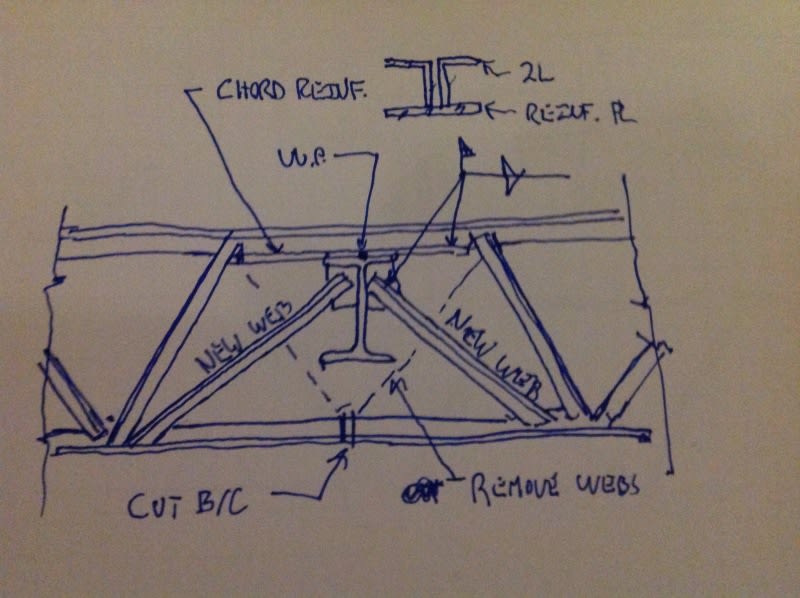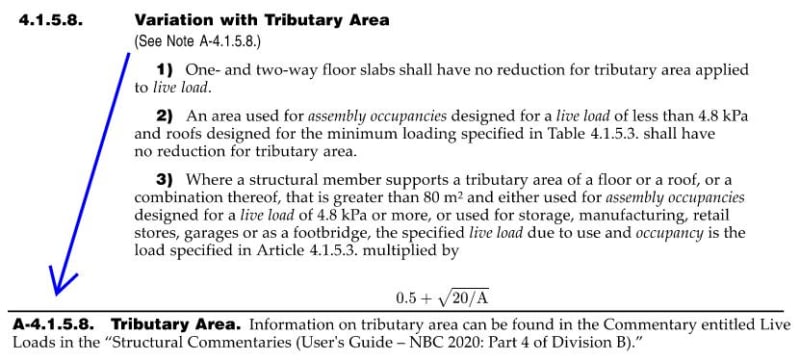Working on a project where the loading is being changed on OWSJ members. I plan on proposing 3 options to my client:
1) Reinforce webs - as it stands, I calculated its compressive resistance to be 10kN
2) Add 1 or 2 supports at bottom chords - I didn't think this was an option but saw KootK recommended it on a thread years ago (single support still loads multiple webs higher than 10kN in compression unless more web members are added)
3) Add 2 supports at top chord
Below is an image but it is uploading blurry so I also attached it.

Option 1 is a lot of work, also, I will need to check footings.
I am thinking that option 2 is the optimal since the client could get a beam under bottom chord more easily than under the top chord and no modification to webs is required. As I understand it, using option 3, 2 new web members would be required at each OWSJ. Below is a KootK sketch from some time ago showing a good detail for option 3.
Note that there are 2 floors that need to be reinforced.

Base on your experience, what are the Pros & Cons?
1) Reinforce webs - as it stands, I calculated its compressive resistance to be 10kN
2) Add 1 or 2 supports at bottom chords - I didn't think this was an option but saw KootK recommended it on a thread years ago (single support still loads multiple webs higher than 10kN in compression unless more web members are added)
3) Add 2 supports at top chord
Below is an image but it is uploading blurry so I also attached it.

Option 1 is a lot of work, also, I will need to check footings.
I am thinking that option 2 is the optimal since the client could get a beam under bottom chord more easily than under the top chord and no modification to webs is required. As I understand it, using option 3, 2 new web members would be required at each OWSJ. Below is a KootK sketch from some time ago showing a good detail for option 3.
Note that there are 2 floors that need to be reinforced.

Base on your experience, what are the Pros & Cons?

